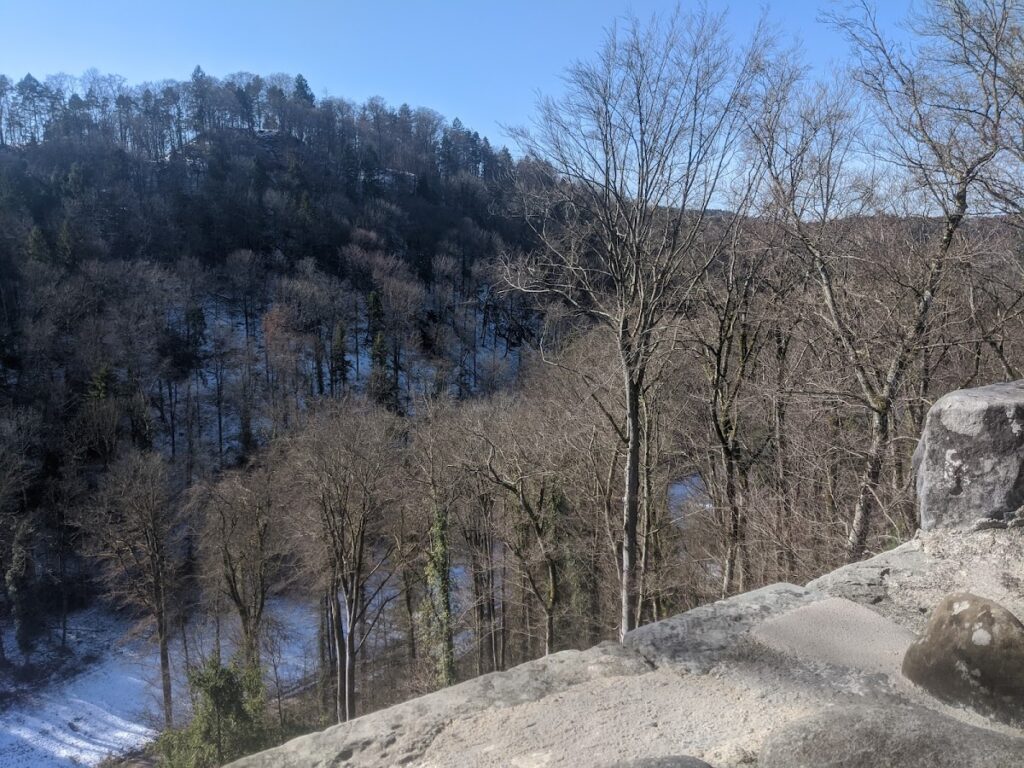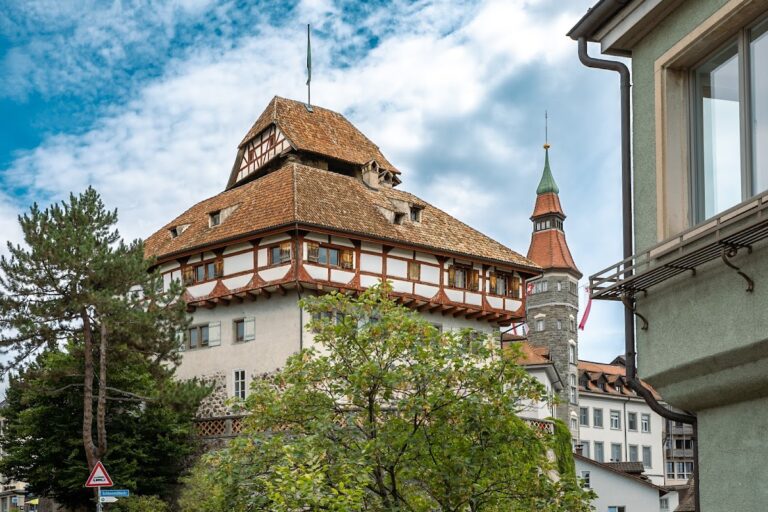Alt-Wülflingen Castle: A Medieval Fortress in Winterthur, Switzerland
Visitor Information
Google Rating: 4.6
Popularity: Low
Google Maps: View on Google Maps
Official Website: ixhotel.com
Country: Switzerland
Civilization: Unclassified
Remains: Military
History
Alt-Wülflingen Castle stands on a hill in the municipality of Winterthur, Switzerland. It originated as a fortified site built by the Alemannic people, who settled the area during the early medieval period. The nearby village of Wülflingen was first recorded in 897 under the name “Wulfilinga,” reflecting its foundation by this Germanic tribe. From at least the 10th century, the castle served as the residence of a local comital family, indicating its role as a regional center of power.
The castle itself likely arose by the mid-11th century, possibly developing on the location of an earlier refuge castle used for defense. It was closely connected with the noble lineage of Wülflingen, whose members included figures such as Willebirg von Wülflingen and her kin. Among the notable descendants was Hunfried, who held prominent church and imperial offices, including serving as chancellor to Emperor Henry III and later as archbishop of Ravenna. In 1055–56, the castle gained historical prominence when Count Kuno of Achalm, residing there, detained the Bishop of Regensburg under imperial orders, demonstrating its strategic importance.
In 1089, the castle and its lands were donated to Zwiefalten Abbey, a religious institution, though later disputes led to its return to secular hands. Over the following centuries, ownership shifted through several noble families: it passed to the counts of Horburg and by 1264 became part of the Habsburg territories, reflecting the region’s changing political landscape. By 1239, the Habsburg-Kyburg line controlled the site, constructing the main tower—or bergfried—that still stands today. Various noble families held the castle as a fief, including the von Wülflingen, von Hettlingen, and von Seen dynasties, who undertook renovations and fulfilled military duties for the Habsburg rulers.
In 1376, the lordship was pledged to Hartmann von Seen and later inherited by Ulrich VIII von Landenberg-Greifensee, who made the castle his home. Toward the end of the 15th century, ownership passed through marriage to the von Rümlang family. Their tenure was marked by financial difficulties and conflicts, culminating in the execution of Hans Konrad von Rümlang in 1529, an event underscoring the instability of the period.
The early 16th century brought further change when Hans Steiner acquired the castle and lordship in 1528. A plague outbreak in 1596 severely affected the local population and claimed the life of the then-lord, Sebastian Steiner. Attempts to sell the castle to the nearby city of Winterthur in 1634 failed initially, but later that year, families Escher and Meiss purchased the property. They constructed a new residence in the village below, repurposing materials taken from the castle ruins for this project.
The castle’s judicial authority persisted until 1760, when sovereignty transferred to Zurich. The bergfried served as a prison until at least 1764, after which the castle gradually fell into disrepair. Outbuildings were removed in 1834, and stones were reused locally, accelerating its decline. An earthquake in 1911 further damaged the structure. Beginning in 1895, restoration efforts focused on stabilizing the tower, including adding a tiled roof and repairing the walls during the 20th century. Following concerns about weather damage, the ruin was secured with protective coverings in the 2010s, with extensive masonry restoration completed in 2018 to conserve the historic remains.
Remains
Alt-Wülflingen Castle occupies a wooded hill positioned 541 meters above sea level, overlooking the Totentäli valley near Winterthur. The castle complex’s layout reveals a classic medieval hilltop fortress with a central fortified tower and surrounding residential and ancillary buildings. The main surviving element is the bergfried, a tall defensive tower serving as the core stronghold.
Constructed around the 13th century, the bergfried measures approximately 7.3 by 7.3 meters at its base. Its walls, built from large sandstone blocks fashioned with a rusticated style known in German as buckelquader, reach up to 2.25 meters in thickness, providing substantial fortification. The tower itself rises about 18 meters high and contains two internal spiral staircases, allowing movement between floors and access to elevated positions. Visitors ascend 76 steps to reach a viewing platform situated 15 meters from the ground, which once provided wide-ranging surveillance of the surrounding landscape, including views of the nearby Töss river and the Brüelberg hill.
The original entrance to the tower was located above ground level, a defensive feature common in medieval keeps. This elevated doorway was restored and reopened during the renovations in the 1980s, while a later ground-level door, added in more recent centuries, was sealed off in 1936 to preserve historical accuracy. The castle’s other structures, such as the residential wing, inner courtyard, and various outbuildings, have left only faint traces visible today. Barns and stables once stood near the foot of the hill, close to the Töss river, supporting the castle’s agricultural functions.
Over time, stones from the castle were taken for use in building Schloss Wülflingen, the new residence constructed in the village below in the 17th century, contributing to the castle’s physical decline. Protective efforts in the modern era have involved stabilizing wall tops, securing the ruins with straps, and installing roofing to shield masonry from weather erosion. These conservation measures culminated in the 2018 restoration, which preserved the bergfried as a prominent and well documented medieval landmark within the region.










